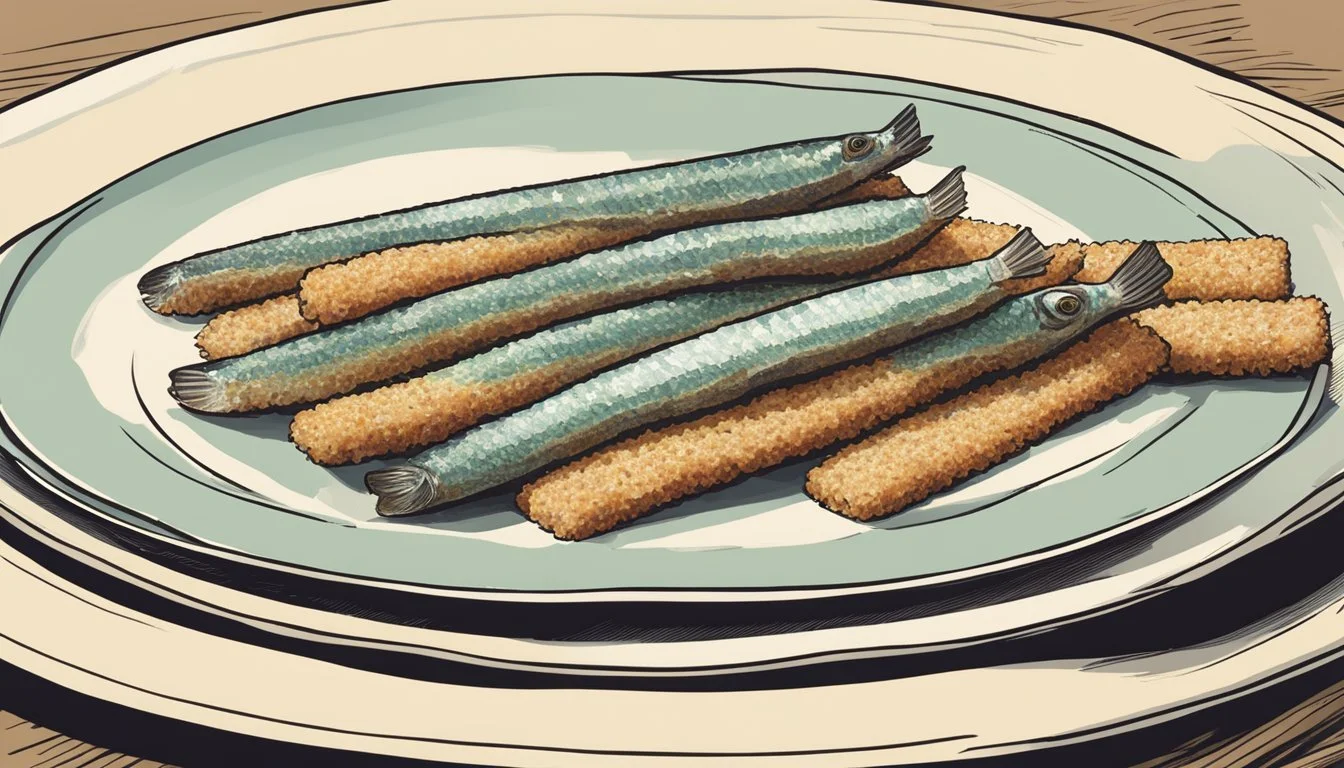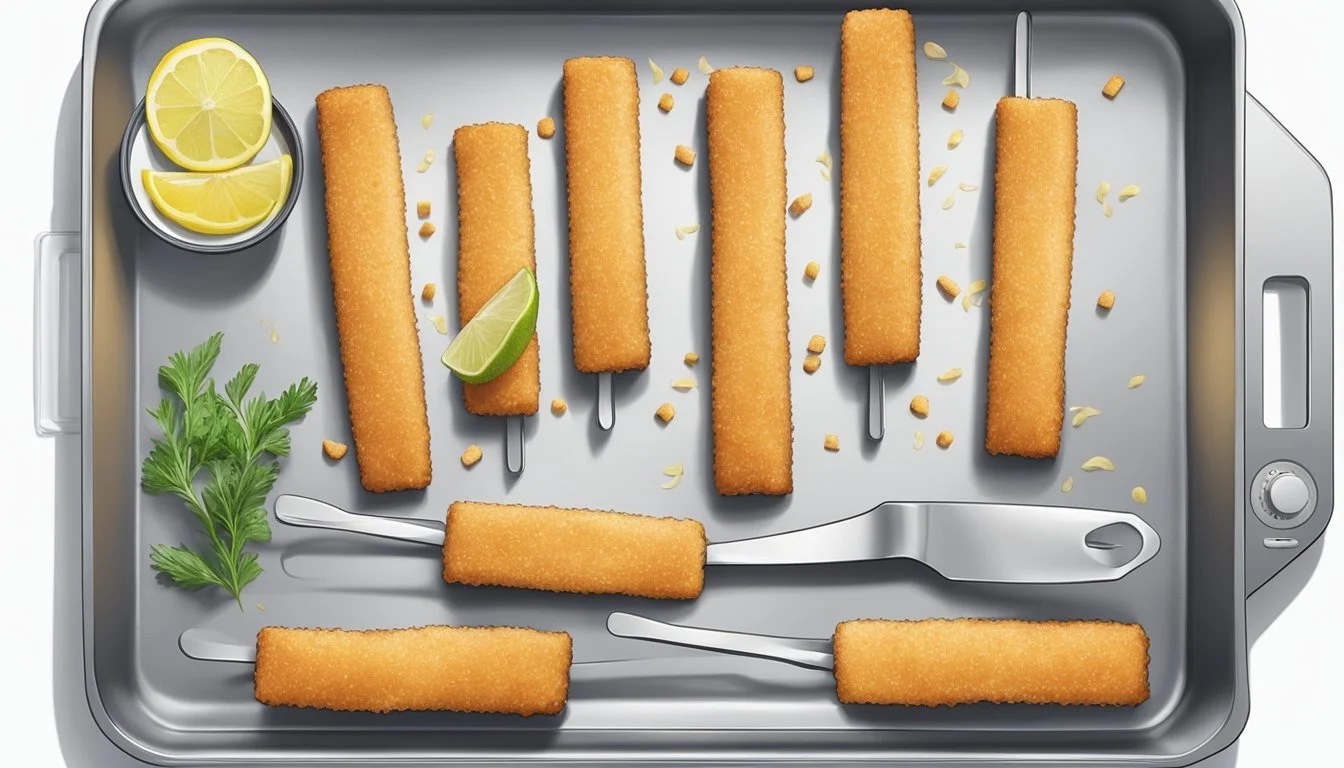How Long Do Gluten-Free Fish Sticks Last?
Storage Tips and Shelf Life Explained
Gluten-free fish sticks are a delightful and healthy option for anyone avoiding gluten without wanting to compromise on taste. For those wondering about their shelf life, gluten-free fish sticks can last up to three months in the freezer when stored properly. This makes them an excellent choice for meal prepping or keeping on hand for a quick and tasty meal.
Freshly made gluten-free fish sticks can be refrigerated for up to two days if you plan to consume them soon. Ensuring they are stored in an airtight container helps maintain their crispiness and prevent them from absorbing other flavors from the fridge.
Proper storage is crucial to maintaining the quality and safety of your fish sticks. Always check for any signs of spoilage, such as off smells or changes in texture, before consuming. This way, you can enjoy your gluten-free fish sticks at their best, whether freshly prepared or straight from the freezer.
Understanding Gluten-Free Fish Sticks
Gluten-free fish sticks are a popular choice for those looking to enjoy a crispy, delicious seafood dish while avoiding gluten. This section covers what these fish sticks are and what makes them special, along with tips on choosing the right fish for your recipe.
What Are Gluten-Free Fish Sticks
Gluten-free fish sticks are made using fish coated with gluten-free ingredients to ensure they are safe for people with gluten sensitivities or celiac disease.
Typically, white fish such as cod, tilapia, halibut, or even salmon are used. The coating is usually made from gluten-free panko or breadcrumbs, combined with seasonings like garlic powder, onion powder, and paprika.
Fish sticks are then either baked or fried to achieve a crispy exterior. Heating methods such as air frying or oven baking are popular because they can create a crunchy texture without needing to use a lot of oil.
Choosing the Right Fish
Selecting the appropriate fish is crucial for making excellent gluten-free fish sticks. White fish, such as cod, tilapia, or halibut, is often preferred due to its mild flavor and flaky texture, which holds up well during cooking.
Cod: A versatile and mild-flavored fish that is easy to cut into sticks.
Tilapia: Affordable and widely available, making it a popular choice.
Halibut: Firmer and meatier, ideal for those who prefer a more substantial bite.
Salmon: Adds a rich flavor and is packed with healthy fats and nutrients.
When choosing fish, it’s essential to look for fresh, high-quality fillets. Opt for wild-caught or sustainably farmed options when possible. Always ensure the fish is thoroughly thawed and patted dry to ensure the coating adheres properly.
Preparation Techniques
Several factors, such as the use of gluten-free breading essentials and proper seasoning methods, contribute to creating delicious gluten-free fish sticks.
Gluten-Free Breading Essentials
Using a gluten-free breading mix is crucial for making gluten-free fish sticks. Ingredients like gluten-free breadcrumbs, flour, and cornmeal are often used.
Start by slicing the fish into sticks, then season with salt and pepper. Next, prepare three bowls for the breading process. In the first bowl, place the gluten-free flour with garlic powder, and paprika. The second bowl should contain whisked eggs. In the third bowl, mix gluten-free breadcrumbs with black pepper and parsley.
Dip each piece of fish first into the flour mixture, then the egg mixture, and finally coat thoroughly with breadcrumbs. This method ensures an even and crispy coating. Use olive oil sparingly or a cooking spray on a baking sheet before placing the fish sticks on it.
Seasoning Your Fish Sticks
Proper seasoning is essential to enhance the flavor of the fish sticks. Beyond the basic salt and pepper, additional spices like garlic powder, onion powder, and paprika can be included in the flour mixture for an extra kick.
A mixture of smoked paprika and ground black pepper can be added to the breadcrumbs for a deeper flavor profile. Fresh parsley can also be finely chopped and mixed into the breadcrumbs for an added hint of freshness.
Once seasoned, the fish sticks can be baked at 375°F for 12 minutes or air-fried at the same temperature for optimal crispiness. Accurate seasoning ensures the fish sticks are tasty and flavorful, even before dipping in sauces.
Cooking Methods
Gluten-free fish sticks can be prepared using various methods, with baking and air frying being two popular options. Each method offers a unique approach to achieving a crispy and delicious finish.
Baking Gluten-Free Fish Sticks
Baking gluten-free fish sticks is straightforward and involves using the oven. Preheat the oven to 400°F. Line a baking sheet with parchment paper or lightly grease it with cooking spray. Arrange the breaded fish sticks on the sheet, ensuring they do not touch.
Bake for 15-20 minutes or until golden brown, flipping them halfway through to ensure even cooking. This method provides a consistently crispy texture without the need for excessive oil.
For an extra crunch, consider using gluten-free breadcrumbs or adding Parmesan cheese to the coating mixture.
Using an Air Fryer
Cooking gluten-free fish sticks in an air fryer is another easy and popular method. Preheat the air fryer to 375°F. Lightly spray the basket with cooking spray to prevent sticking. Place the fish sticks in the basket in a single layer, avoiding overlap.
Cook for 12 minutes, flipping them at the halfway mark for even crisping. This method uses minimal oil while achieving a crunchy exterior, ideal for a quick dinner option.
Remember to spray the tops of the fish sticks lightly with oil before cooking to enhance the crispiness.
Serving Suggestions
Pairing gluten-free fish sticks with the right sides and dips can enhance your meal. Consider these specific accompaniments and homemade dip recipes to make your meal more enjoyable.
Accompaniments and Sides
Serve the fish sticks with fries or French fries for a classic touch, just like traditional fish and chips.
Add a portion of lemon wedges on the side. Squeeze fresh juice to brighten the flavors of the fish sticks.
Consider a side of steamed or roasted vegetables such as broccoli, carrots, or green beans for a healthier option.
For a gourmet twist, sprinkle grated parmesan over a side salad or the fish sticks themselves.
Homemade Dip Recipes
Tartar Sauce: Mix together chopped pickles, mayo, lemon juice, and a dash of salt and pepper. This classic sauce complements the fish perfectly.
Ranch Dressing: Blend together mayo, buttermilk, garlic powder, onion powder, and fresh herbs. This creamy dressing goes great with fries and fish sticks alike.
Ketchup: A simple yet popular choice, ketchup is a go-to for dipping fish sticks and fries.
For a tangy twist, try a spicy aioli: Combine sriracha with mayo, garlic paste, and lemon juice.
These dips can be adjusted to taste and add a homemade, fresh feel to your meal.
Proper Storage and Shelf Life
Proper storage of gluten-free fish sticks ensures their freshness and safety. Correct refrigeration and freezing methods can extend their shelf life, while recognizing signs of spoilage helps in determining their suitability for consumption.
Refrigeration and Freezing
Gluten-free fish sticks should be stored in the refrigerator if they are to be consumed within a short period. In the fridge, they last for up to 3 days. Use an airtight container or plastic wrap to reduce moisture exposure.
For longer storage, freezing is recommended. When stored in the freezer, gluten-free fish sticks can last up to 6 months. It's best to use a vacuum-sealed bag or wrap them in aluminum foil before placing them in a freezer bag. Keep the freezer at a consistent temperature of 0°F (-18°C) to maintain quality.
Determining Freshness and Safety
To ensure the fish sticks are fresh and safe to eat, examine their color, texture, and odor. Fresh gluten-free fish sticks typically have a light or golden color and a firm texture. If they appear slimy or have a sour smell, they should not be consumed.
Additionally, look for signs of freezer burn in frozen fish sticks, such as icy spots or discoloration. When reheating leftovers, ensure they reach an internal temperature of 165°F (74°C) to kill any potential bacteria. Always check the expiration date on the packaging for pre-packaged frozen fish sticks.
Proper storage practices are vital for maintaining the quality and safety of gluten-free fish sticks, whether they are freshly prepared or store-bought.
Additional Cooking Tips and Tricks
Properly preparing and cooking gluten-free fish sticks can significantly impact their flavor, texture, and gluten-free integrity. Here are some tips to ensure your fish sticks are a hit.
Maintaining Gluten-Free Integrity
To avoid cross-contamination, always use clean utensils and surfaces when preparing gluten-free fish sticks. Separate the gluten-free ingredients from any that contain gluten and wash your hands thoroughly.
For the breading, use certified gluten-free breadcrumbs or crushed chips. Regular breadcrumbs may contain trace amounts of gluten. When coating the fish, ensure that each piece gets an even layer of flour, egg mixture, and breadcrumbs to create a consistent crust.
Finally, monitor the cooking oil's temperature if frying. Gluten-free coatings can burn more quickly than traditional ones, so keep a close eye on them to avoid uneven cooking.
Enhancing Flavor and Texture
Season the fish sticks well before breading. Salt, pepper, and spices like paprika, garlic powder, and onion powder can be mixed into the flour for added flavor. This step ensures that the seasoning adheres directly to the fish.
For extra crunch, consider using gluten-free panko instead of traditional breadcrumbs. Panko provides a lighter, crispier texture perfect for fish sticks.
If baking, preheat the oven to ensure even cooking. Arrange the fish sticks on a baking sheet with space between each piece. Spray or drizzle a bit of oil on top before baking. This helps achieve a crispy exterior without drying out the fish.
Serve the fish sticks fresh with an accompanying dipping sauce, like homemade aioli or tartar sauce, to complement the flavors.







